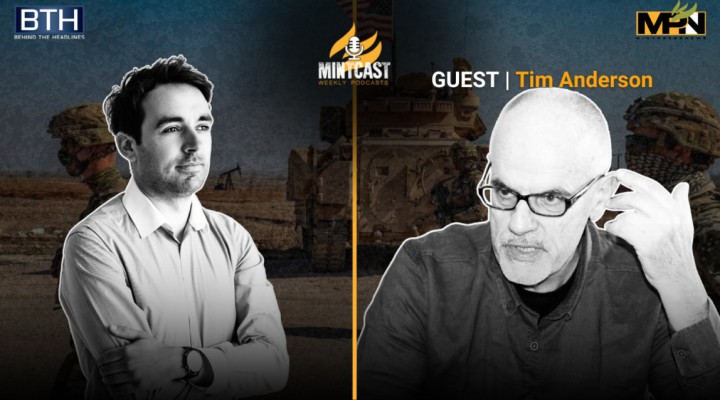America’s Decline in the Middle East and the Axis of Resistance, With Tim Anderson

Writer and academic Tim Anderson discusses the waning power of the U.S. in the Middle East and the rise of a formidable alliance led by Iran, Syria, and Yemen. Explore the region’s transformation and future prospects in this eye-opening interview with Alan MacLeod.
The Middle East – or what should more accurately be called West Asia – is a pivotal region of the globe. It is home to the primary source of the planet’s most important commodity: oil. Not coincidentally, it is also the epicenter of global conflicts.
Since 9/11, the United States has launched a series of attacks on sovereign nations, from Afghanistan and Iraq to Libya, Syria and beyond. These wars have left the region beleaguered and broken. But recently, as American power wanes, a new set of forces has emerged. An axis led by Iran, Syria and Yemen has emerged to counter U.S.-Israeli dominance and global giants, such as China and Russia, are increasingly being drawn into the region.
Could this lead to a new and even brighter future for West Asia?
Tim Anderson joins the show to discuss all things West Asia. Tim is a writer, academic, and director of the Center for Counter Hegemonic Studies. His latest book, “West Asia After Washington: Dismantling the Colonized Middle East,” explores this topic.
“It is quite obvious that the U.S.’ influence in this region [West Asia] is in decline,” Anderson told MintCast host Alan MacLeod, laying out several factors in said decline, including the embarrassing American withdrawal from Afghanistan, the unanimous demands from Iraq that the U.S. leave the country, the growing importance of Russia and China in the region the increasing importance of the BRICS economic bloc, the successful Russian operation to keep Assad in power in Syria; the Yemeni blockade of the Red Sea; the failure of the U.S. in Syria and the nosedive in global public opinion of the United States.
“Things cannot go back to the way they were. Clearly, the region is in flux, and the influence of the U.S. is in decline,” Anderson concluded.
Anderson joined the show from Damascus, Syria – something that would have been nearly impossible until recently. He noted the tremendous destruction that the civil war had wrought upon the country, much of which is still occupied by the United States, Israel, and other actors. Nevertheless, despite American unilateral coercive measures (i.e., sanctions), life in the major cities is approaching normality again.
Anderson identifies Iran as a critical player in the formation of a counter-hegemonic axis. It has found allies in Syria, Lebanon, Palestine, and, crucially, China and Russia. This grand alliance of powers opposing U.S. policy in the region was something that American planners in the 1990s considered their greatest fear.
Nevertheless, a wounded animal is a dangerous one, and the U.S. is far from a spent force. And so, while American power wanes, the people of West Asia should still be on high alert.
The conversation today touches upon Syria and its civil war, Iran, Yemen, Israel’s assault on Palestine, Chinese investment in the region and the persecution of Christians in the Middle East. Watch the interview now, exclusively at MintPress News.
America’s Decline in the Middle East and the Axis of Resistance, With Tim Anderson
 TheAltWorld
TheAltWorld 
0 thoughts on “America’s Decline in the Middle East and the Axis of Resistance, With Tim Anderson”